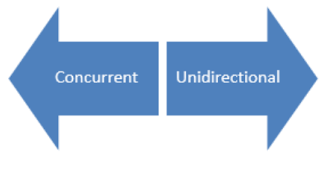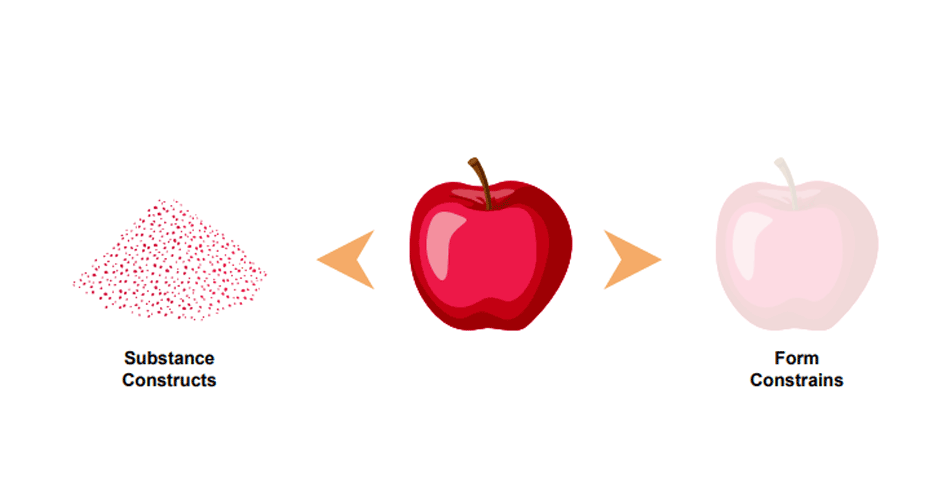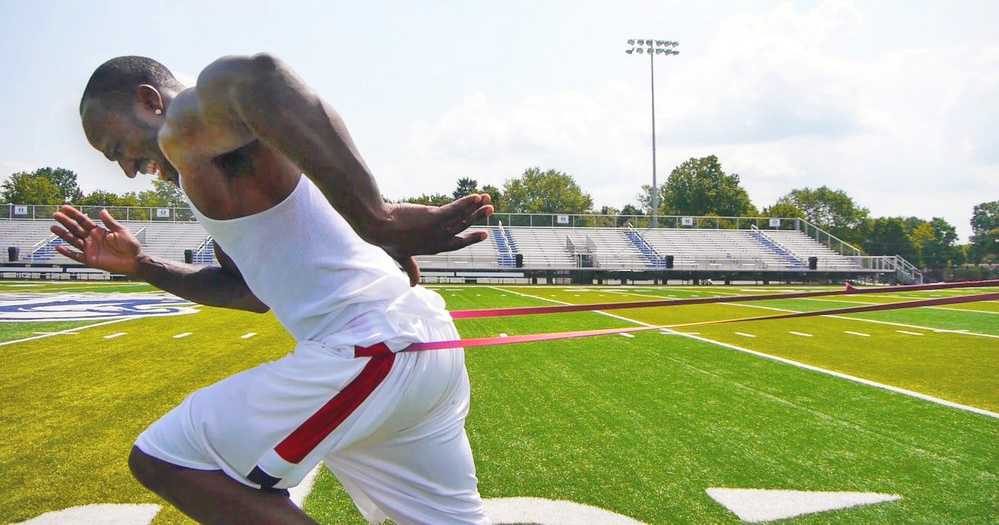Biological Planning, Organizing, and Programming for Physical Preparation – Part 2
Part 1 missed? Click here to read it »
Planning
Working Backwards
Many coaches have preached a very simple way of planning training over the years. That is, to start from the end and work backwards. For instance, if you know your first competition is 16 weeks away, you would simply plan, organize, and program your training in the general preparation period based on this known date. When it comes to organizing for the competitive season, you would start from the last (and usually most important competition) and work backwards.
I am no different in my execution. Working backwards allows for a logical sequencing of training blocks in which each of the previous blocks prepares the athlete(s) for the next phase of training.
Below is a sample of a yearly plan; organized for the collegiate American Football calendar:

The bioenergetic, biodynamic, and bio-motor abilities placed in the horizontal columns are the entities being emphasized during that time period. At no point in time is any bioenergetic/motor/dynamic ability excluded from the training. I will expand upon this in the programming section.
Organizing
The mess of methodologies
With all of the biological principles covered, I want to discuss training theory and methodology next.
For training theory, there are two basic theories: the one factor theory (or Supercompensation theory) and the two factor theory (or fitness-fatigue model) (Verkhoshansky, Supertraining, 6th edtiion (expanded), 2009). These two theories have been covered ad nauseum in hundreds of journals, articles and books. Therefore, I will not expand any more on either of these two theories.
We are all familiar with the two most popular training methodologies: concurrent and unidirectional. The way I view all training methodologies – whether it is Block Periodization, Conjugate Periodization, Conjugate Sequencing System, or anything else – is lying somewhere on a continuum from the left (Concurrent) to the right (Unidirectional).

Now, to clear up the definitions, I want to make sure that we are not viewing concurrent or unidirectional just in terms of “strength”. Planning, organizing, and programming training is much more than just accounting for strength. Concurrent methodology is having multiple bioenergetic (alactic, lactic and aerobic), bio-motor (speed, power, strength, stamina, suppleness and skill), and biodynamic (general, special preparatory/developmental, and competition) abilities present and being emphasized in the acute training plan and program. Unidirectional methodology is having limited bioenergetic, bio-motor and biodynamic abilities present and being emphasized in the acute training plan and program. Again, there is no explicit number of abilities that separates the methodology you are using from concurrent to unidirectional, and vice versa.
Next, I want to classify some of the most popular systems and methods associated with periodization and methodology:
Yearly Organization: the annual cycle; linkage of all sub-units (monthly, weekly, daily and séances) into a logical sequence based on the level of preparedness, temporal considerations, and competition calendar.
- Concurrent Unidirectional Continuum
At the beginning of a temporal year, you should make a decision for yourself, or your athletes, whether a concurrent or unidirectional approach, is more justified based on the sport/game/competition; and current level of preparedness and trainedness. Now, this designation does not have to be exclusive. It is completely practical to utilize both a concurrent and unidirectional approach at different times of the year. But like any other dichotomy, one is going to be used more than the other. What will be the emphasis for you or your athletes, concurrent or unidirectional?
Monthly Organization: level of organization categorized by 2-16 weeks of training aimed at specific objectives, goals and adaptations based on sport form requirements.
- Block Periodization*
- Accumulation Block
- Transmutation Block
- Realization Block
- Intensification Block
- Concentration Block
- Conjugate Sequencing System
- 5/3/1
- Juggernaut Method
- Linear
- Step
- Undulating
- Flat
*This is the system from Vladimir Issurin. His system can be used for an entire year, but the cycles of block periodization reset on average every 16 weeks, thus, this is why it is classified as monthly organization, not yearly.
All of these programs or training blocks last somewhere between four and sixteen weeks before either resetting or moving onto another phase of training. Linear, Step, Undulating, and Flat refer to the total load of training given the multiplication of the means’ volume and intensity.
Weekly Organization: unit of 7-10 days of organization
- Conjugate Periodization (Westside)*
- High-Low
- Linear
- Step
- Undulating
- Flat
* I view Conjugate Periodization, only as a way of weekly organization. What I am speaking of is the popular set up of (Simmons, 2007):
- Sunday: DE Upper
- Monday: ME Lower
- Tuesday: Off
- Wednesday: ME Upper
- Thursday: Off
- Friday: DE Lower
- Saturday: Off
There are many other ways to organize the week utilizing ME/DE Lower & Upper training sessions.Conjugate Periodization can (and usually does) have some monthly organization and variability built into it, (i.e. circa-max cycle, dynamic effort waves changing from bands to chains, four week cycle of max effort exercises, etc.) but overall, the main theme it presents is weekly organization. Now don’t get me wrong here; could you adapt some of the teachings of Louie Simmons and Conjugate Periodization to your program? Absolutely. Have other coaches done this? Yes, they have; and so have I. But you can’t take it in entirety and apply it to all other sports, games, competitions, athletes and individuals.
High-Low weekly organization was popularized by the late, great sprint coach, Charlie Francis. For those not familiar with this way of organization, it is defined by separating and grouping high CNS stressors to individual sessions, and separating and grouping low CNS stressors to individual sessions (Francis, 2008). This way of organization allows for more total training volume to be performed because of the increased recovery brought on by the restorative nature of the low sessions. Linear, Step, Undulating and Flat again refer to the interplay of volume and intensity amongst all means.
Daily Organization: utilizing a combination of multiple séances of methods (maximal, interval, dynamic, complex, contrast, etc.), means (sprints, jumps, throws, weights, etc.), and any further subsets (acceleration sprints, upper body weights, lower body weights, depth jumps, etc.) along with manipulating acute variables of intensity, volume, density and rest periods, to achieve the objective of the day.
As the definition states, daily organization must be in-line given the type of weekly organization and the bioenergetic, bio-motor and biodynamic objectives for the month (or block).
Obviously, the above information is not an exhaustive list and by no means complete or without flaw. For simplicity, ease, and staying objective, this is how I view organization of training.
Programming
Somewhere in the middle
To continue on with our discussion of methodologies, the continuum between concurrent and unidirectional, and how to organize training, I want to present what I believe to be the easiest, most effective, and adaptable, way of programming.
My catalyst to programming–is the concept of Vertical Integration. I was first introduced to vertical integration by the writings of James Smith on the EliteFTS™ Q&A. My curiosity was peaked and I went searching for more information. I eventually purchased the work of Charlie Francis and began to read about Charlie’s concepts of programming.
In a nutshell, vertical organization can be summed up as “all training components are being performed at all times – only the volumes vary”.
Charlie Francis categorized his training components in the following way (Francis, 2008):
- Electrical Muscle Stimulation
- Strength Work
- Explosive Jumps, Hops, & Skips
- Speed Work
- Tempo Work
- Core Conditioning Work
As the definition states, Charlie’s athletes would be performing these components throughout the entire training year. However, depending on the time of the year – such as the off-season, indoor season and outdoor season – the volumes would vary based on the objective of that time period.
What I’ve come to realize, through using vertical integration and continuing to study programming, is that vertical integration sits smack in the middle of the continuum between concurrent and unidirectional methodologies. Vertical integration can be tailored and adapted to fit both a concurrent methodological approach, and a unidirectional methodological approach.
Think back to the definition of vertical integration, “all training components are being performed at all times – only the volumes vary”. To make vertical integration concurrent, the total volume of the training components would be dispersed, and none of the components would be emphasized more than the others (relatively speaking, of course). An example of a concurrent training program is any off-season program for a team sport athlete. Team sport athletes, by nature of their required sport form, must possess a plethora of bio-motor abilities, and have both output and capacity of multiple bioenergetic systems. In order to develop all of these abilities, and achieve the necessary adaptations, the program will have all of the above components present throughout the entire duration of the off-season, with no component emphasized more than the others.
To make vertical integration unidirectional, you would simply emphasis the volume of a limited amount of components more than others. For instance, the famous strength blocks associated with Yuri Verkhoshansky are an example of making vertical integration unidirectional. For sports that require strength (maximal, explosive, acceleration, starting and reactive) as the main bio-motor ability (throws, weightlifting, powerlifting, etc.), strength work is put at the highest volume relative to the other components. However, as Dr. Verkhoshansky has made clear over the years–addressing the misconceptions with his work, there is a presence of other components during the strength block, just in a limited volume, as to not interfere with the main objective, which is the development of strength (Verkhoshansky & Verkhoshansky, Special Strength Training Manual for Coaches, 2011).
Vertical integration, to me, is the best way to plan, organize and program training. It is the most complete because it is so easily adaptable to all sports and the needs of individuals. Other methodologies or periodization schemes are too limited or rigid in one way or another to fit the needs of multiple sports and individuals. The best analogy I can give is to describe vertical integration as an umbrella that hangs over all other methodologies and systems of periodization.
As I mentioned earlier in the article, Charlie Francis categorized his training components into training means, like below (Francis, 2008):
- Electrical Muscle Stimulation
- Strength Work
- Explosive Jumps, Hops, & Skips
- Speed Work
- Tempo Work
- Core Conditioning Work
The way I categorize my components, is by starting from the three biological principles:
- Bioenergetic
- Biomotor
- Biodynamic
Then looking at their subcategories:
- Bioenergetic
- Alactic
- Lactic
- Aerobic
- Biomotor
- Speed
- Power
- Strength
- Stamina
- Suppleness
- Skill
- Biodynamic
- General
- Special Preparatory
- Special Developmental
- Competition
And for bioenergetics and biomotor abilities, further categorized:
- Bioenergetic
- Alactic
- Output
- Capacity
- Lactic
- Output
- Capacity
- Aerobic
- Output
- Capacity
- Alactic
- Biomotor
- Speed
- Acceleration
- Maximal Velocity
- Endurance
- Power
- Maximal
- Endurance
- Strength
- Maximal
- Explosive
- Acceleration
- Starting
- Reactive
- Hypertrophy
- Endurance
- Stamina
- Endurance
- Capacity
- Suppleness
- Mobility
- Flexibility
- Skill
- Coordination
- Technique
- Tactics
- Speed
Finally, training means, which can be used to develop the bioenergetic systems, biomotor abilities, and biodynamic criteria, are:
- Sprints
- Jumps
- Throws
- Weights
- Calisthenics
My modification to vertical integration can be summed up by this statement: “all of the biological principles are present throughout the year, but the volumes and INTENSITIES change, along with the emphasis put on the subcategories of each. You can construct all of the constituents–from the biological principles–and yearly, monthly, weekly and daily ways of organization, to create any of the programs mentioned. This is why I view vertical integration as an umbrella. Through the combination of utilizing the three biological principles in sports training as the criteria for sports form, and the tried and true means of physical exercise, I believe I am able to best serve my athletes by constructing a training program individualized for them.











Responses